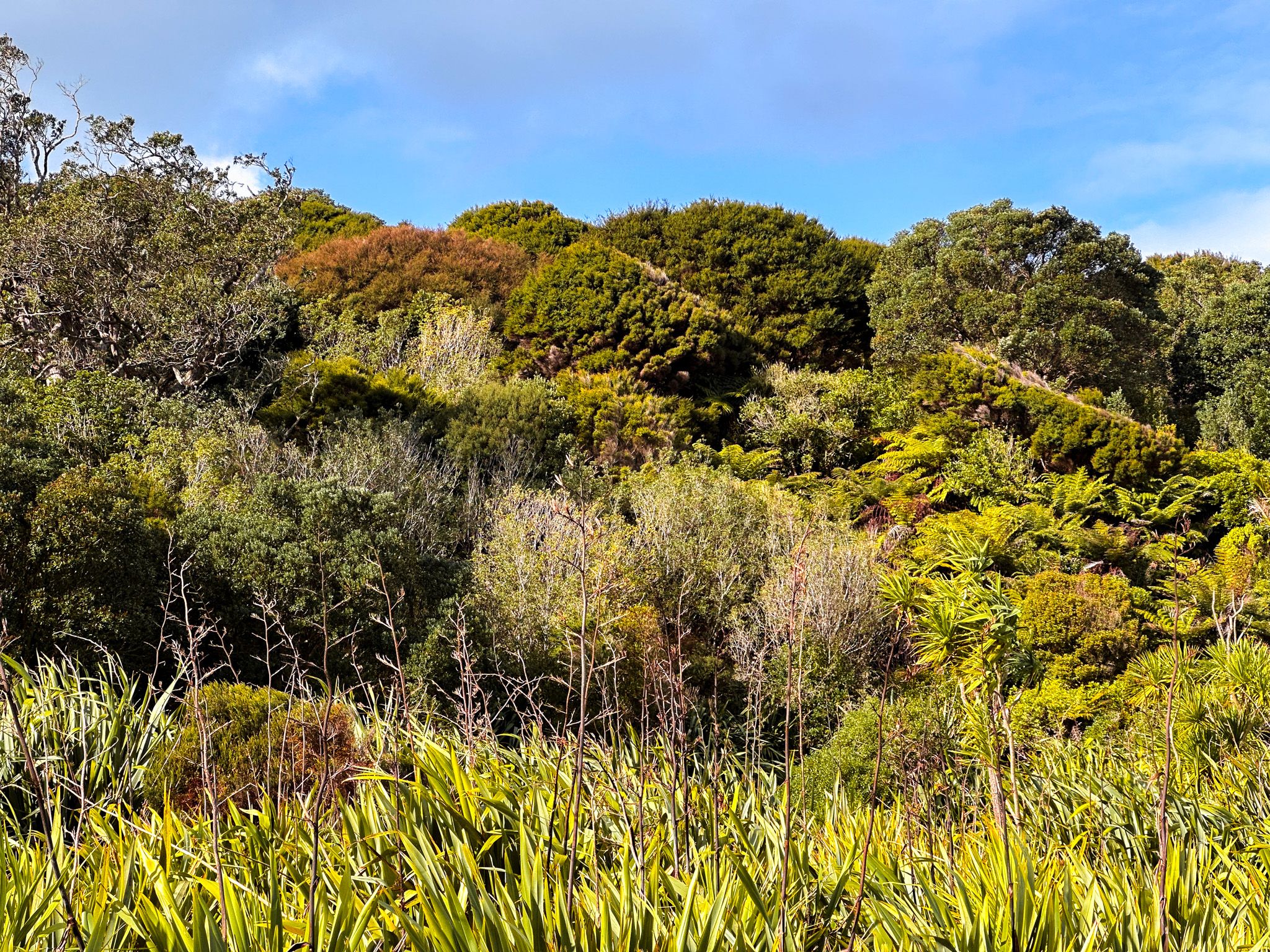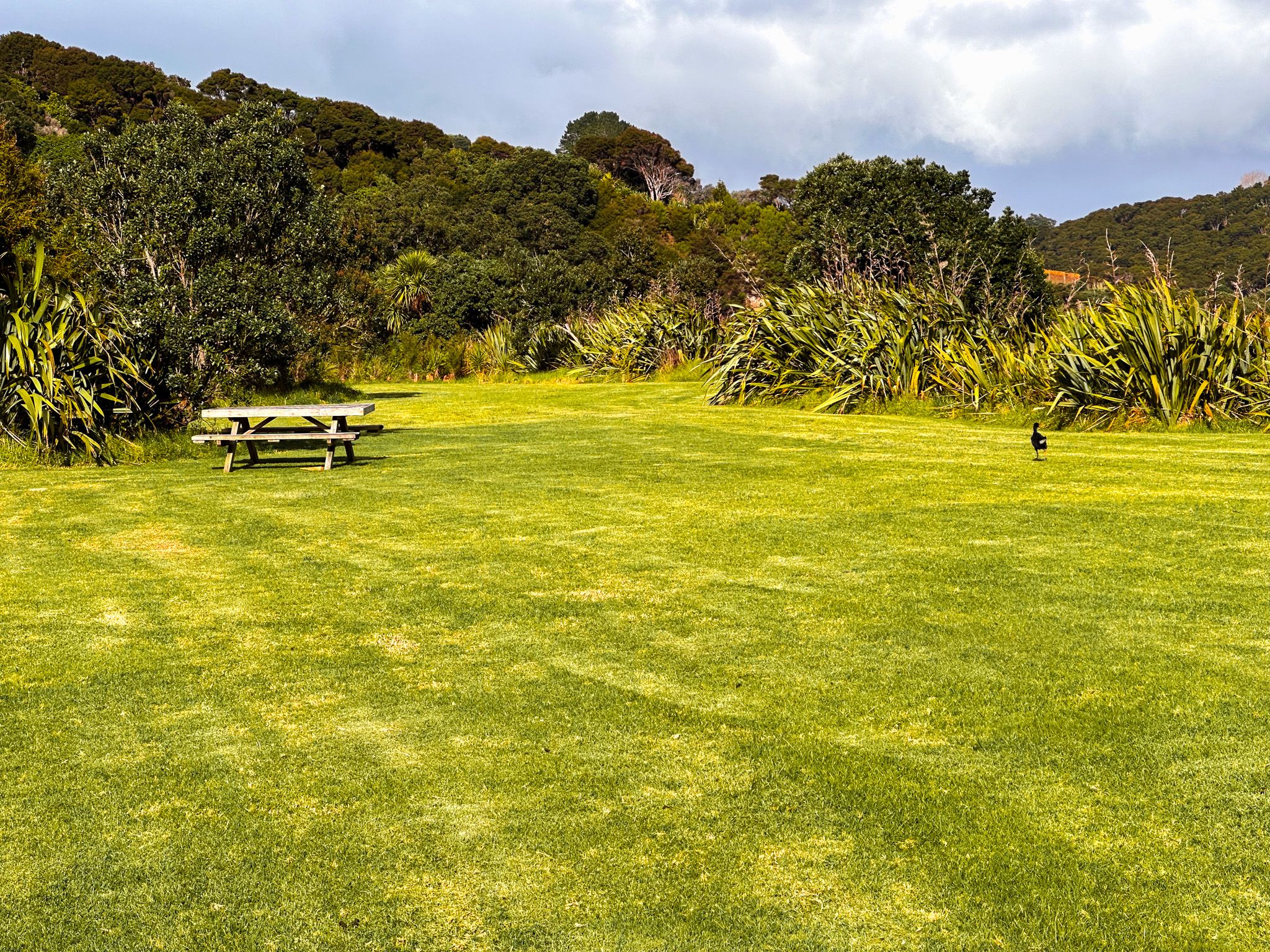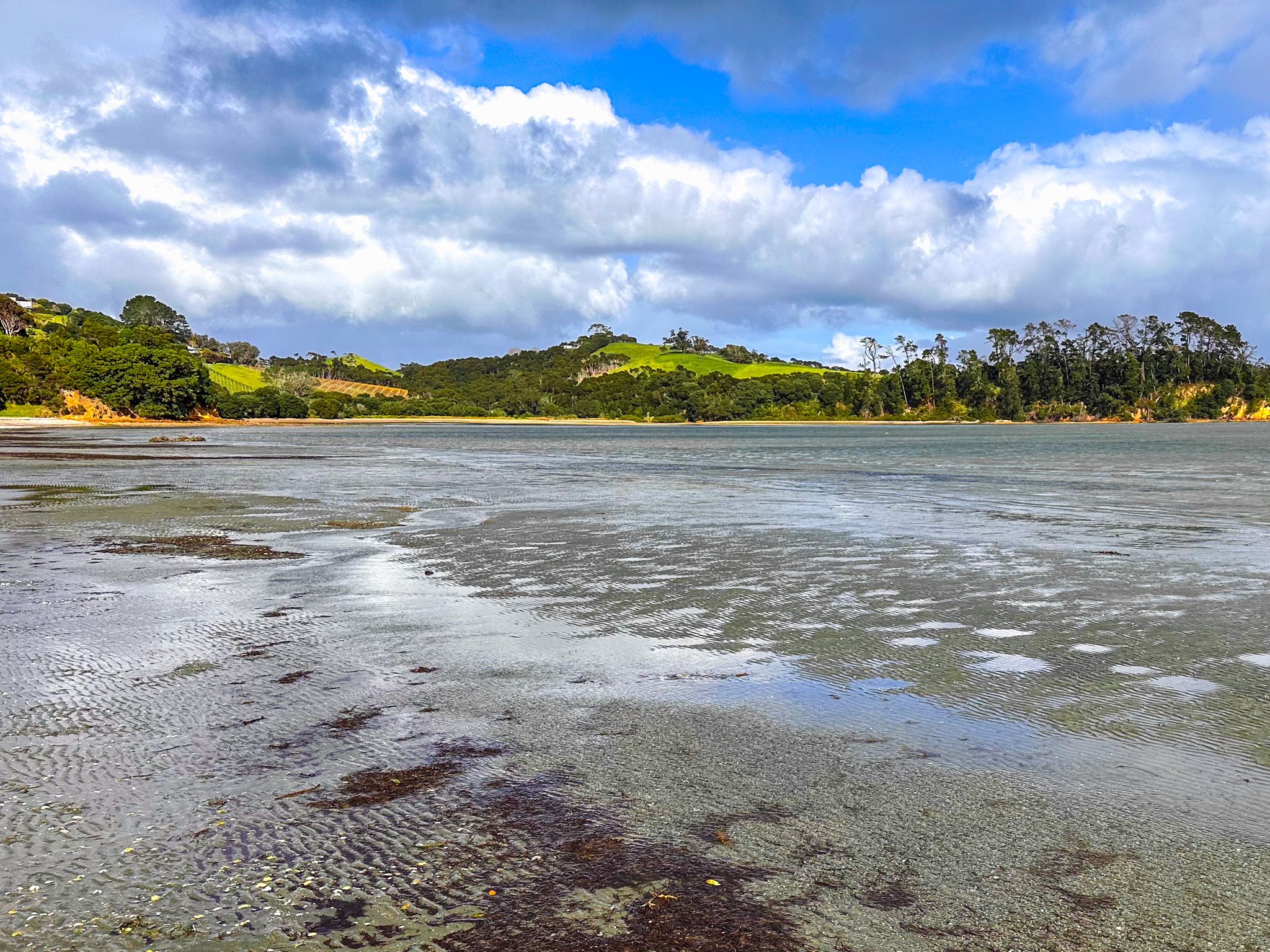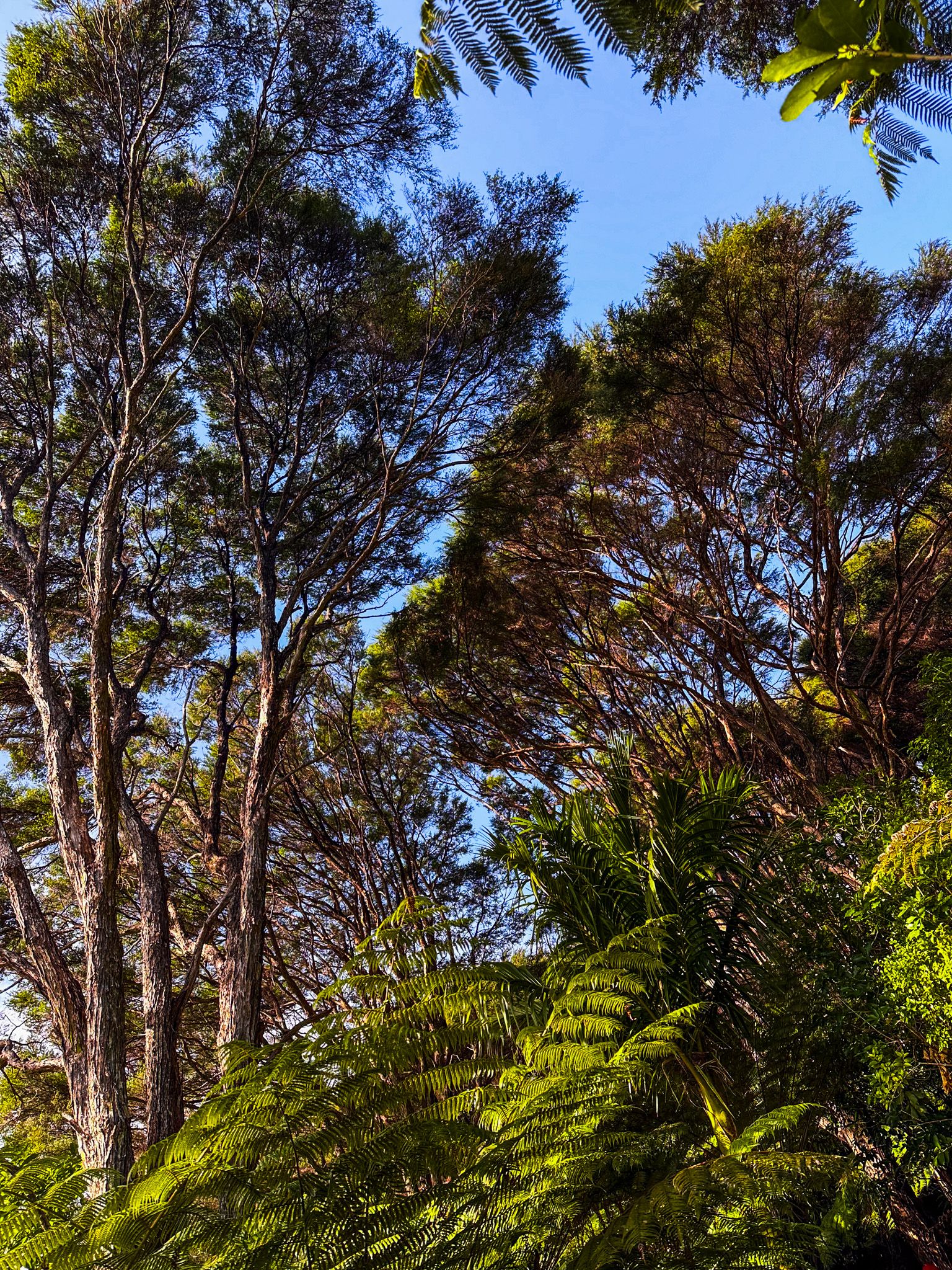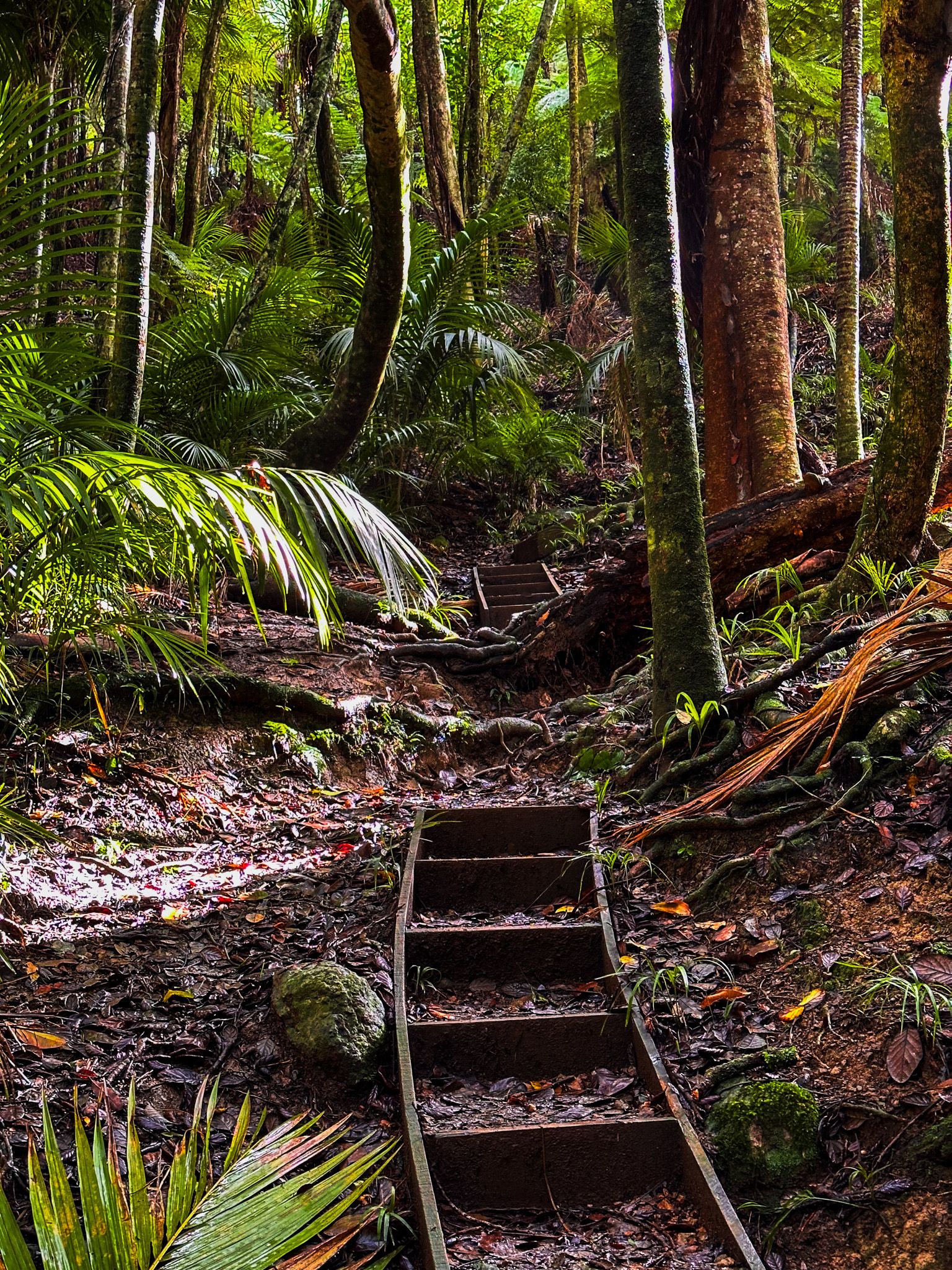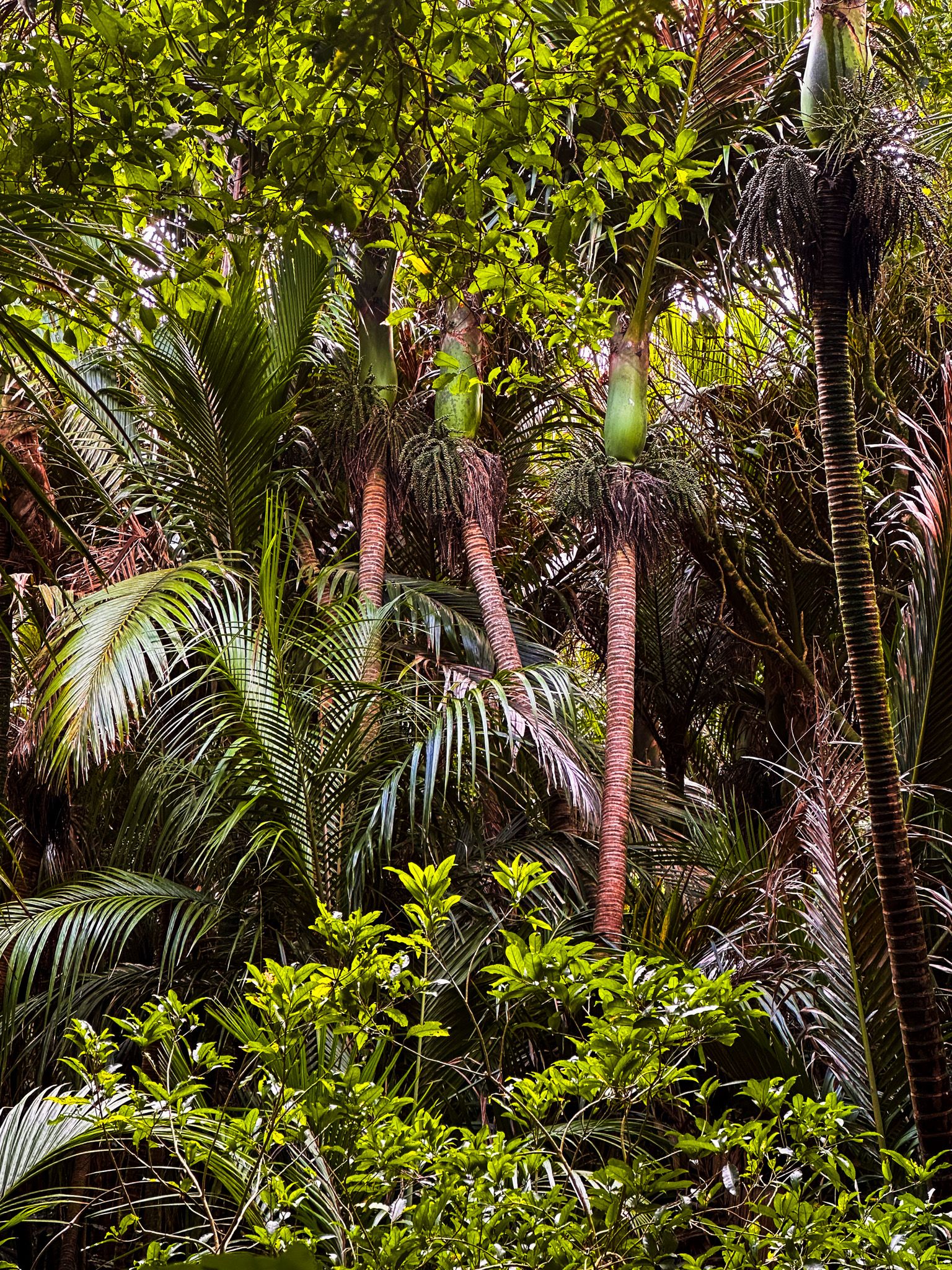Exploring Whakanewha Regional Park
Whakanewha Regional Park is one of the 28 regional parks in Auckland City, situated on the southern side of Waiheke Island. This scenic park is easily accessible from the Sculpture Car Park off Gordons Road. From there, visitors can enjoy a short walk to Rocky Bay Beach and explore various trails through the regenerating forest.
Natural Features and Wildlife
The park boasts a mature coastal forest featuring taraire, kohekohe, and old kānuka trees. Behind the coastline, regenerating mānuka and kānuka shrubland have replaced former farmland since 1994. Rocky Bay Beach, located on the park's southern edge, is a pebble and shell beach with expansive tidal mudflats. The absence of possums on Waiheke Island has allowed relatively rare native wetland birds to thrive, including bittern, banded rail, spotless crake, and dotterel.
Walking Trails and Activities
Whakanewha Regional Park has a network of walking trails, with linked tracks around the bay and through the forest forming a series of loops. Notable trails include the Nikau Track from the Sculpture Car Park to the Cascades Loop, with a return via the Tarata Track, Kowhai Track, and Dotties Lane. The Te Ara Hura trail also passes through the park on the Nikau Walk, continuing northwest along the coast to Omiha Bay.
Historical and Cultural Significance
The area of Whakanewha has a rich Māori history, with shell middens and a pā site located within the park. The name Whakanewha translates to "shading eyes from the setting sun." In the 1840s and 1850s, Ngāti Pāoa iwi supplied lumber, fruit, and vegetables to Auckland from Whakanewha and other locations on Waiheke Island. Around 1855, Samuel Wood purchased part of Whakanewha, leading to a dispute with the Māori residents who had not been consulted. The government confirmed Wood's title to the land in 1858, and the area was developed as a sheep farm.
Transformation into a Regional Park
The land remained a sheep farm for over a century until Auckland City purchased it in 1994 for redevelopment as a regional park. Efforts to regenerate the forest began, and the park's tracks, campsite, and beach reserve were developed. Whakanewha Regional Park officially opened to the public in 2007.
How to Get There
To visit Whakanewha Regional Park, the easiest access point is the Sculpture Car Park off Gordons Road. From there, it is a short walk to the park's attractions. Alternatively, visitors can take a bus to Omiha Memorial Hall and follow the signs into the park along the shoreline.
